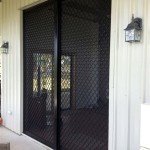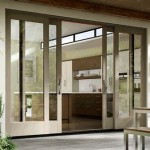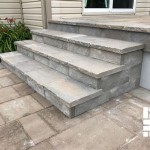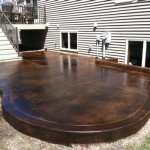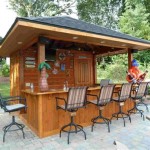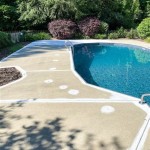Designing A Luxurious Outdoor Patio Stone Wall
The creation of a luxurious outdoor patio space often hinges on the thoughtful integration of natural elements. A stone wall, in particular, can serve as a focal point, providing both aesthetic appeal and practical benefits. Designing a stone wall that exudes luxury requires careful planning and attention to detail, encompassing material selection, construction techniques, and integration with the surrounding landscape.
The inherent beauty of natural stone lends itself well to creating an opulent outdoor environment. Stone walls evoke a sense of permanence and timelessness, contributing to an atmosphere of sophistication and tranquility. Furthermore, the use of quality materials and skilled craftsmanship ensures the longevity and enduring value of the structure, solidifying its status as a luxurious investment.
Material Selection: The Foundation of Luxury
The choice of stone is paramount when designing a luxurious patio wall. The specific aesthetic desired, the existing architectural style of the property, and the local climate all influence this crucial decision. Several types of stone are commonly employed in high-end outdoor spaces, each offering its unique characteristics and visual impact.
Granite is a popular choice for its durability and timeless appeal. Its coarse-grained texture adds a sense of ruggedness, while its inherent strength makes it resistant to weathering and erosion. Granite is available in a wide range of colors, from light grays and pinks to deep blacks, allowing for customization and integration with various design schemes. The density of granite also makes it ideal for sound absorption, potentially reducing noise pollution in outdoor spaces.
Limestone offers a softer, more refined aesthetic compared to granite. Its smooth texture and subtle variations in color create a sense of understated elegance. Limestone is also relatively easy to work with, allowing for intricate detailing and custom shaping. It is often chosen for its natural warmth and ability to complement a variety of architectural styles. However, limestone is more porous than granite and may require sealing to protect it from staining and water damage.
Slate is known for its distinctive layered appearance and rich, dark colors. Its natural cleft surface provides a unique texture that adds visual interest and depth to a patio wall. Slate is also highly durable and resistant to weathering, making it a long-lasting option for outdoor applications. Its natural water resistance is another advantage, reducing the need for extensive sealing or maintenance. The darker tones of slate can create a dramatic and sophisticated atmosphere, particularly when contrasted with lighter-colored landscaping elements.
Fieldstone, often sourced locally, offers a more rustic and natural aesthetic. Its irregular shapes and varied colors contribute to a sense of authenticity and connection with the surrounding environment. Fieldstone walls can be particularly effective in creating a sense of privacy and seclusion, blurring the boundaries between the patio and the natural landscape. The selection process for fieldstone requires careful consideration of the individual stones, ensuring a cohesive and visually appealing arrangement.
Beyond the type of stone, the cut and finish also play a significant role in achieving a luxurious aesthetic. Precisely cut and dressed stones, with clean lines and smooth surfaces, convey a sense of formality and sophistication. Conversely, rough-hewn stones with natural edges create a more rustic and organic feel. The selection of the appropriate cut and finish should be guided by the overall design intent and the desired level of formality.
Construction Techniques: Ensuring Stability and Beauty
The construction of a stone wall is a complex process that requires skilled masonry and a thorough understanding of structural principles. The techniques employed can significantly impact the wall's stability, longevity, and aesthetic appeal. Proper foundation design is crucial to prevent settling and cracking, ensuring the wall remains structurally sound for years to come.
Dry-stacking is a traditional method of constructing stone walls without the use of mortar. This technique relies on the careful placement and interlocking of stones to create a stable structure. Dry-stacked walls offer a rustic and natural aesthetic, allowing for drainage and promoting plant growth within the crevices. The success of a dry-stacked wall depends on the skill of the mason in selecting and arranging the stones, ensuring a tight fit and proper weight distribution.
Mortared walls provide greater structural stability and allow for more flexibility in stone selection and arrangement. Mortar fills the gaps between the stones, creating a solid and impermeable barrier. The choice of mortar color and texture can significantly impact the overall aesthetic of the wall. A carefully selected mortar can blend seamlessly with the stone, enhancing its natural beauty. The use of proper mortar mixing and application techniques is essential to prevent cracking and ensure a long-lasting bond.
Veneer walls consist of a thin layer of stone applied to a concrete or block backing. This technique offers a cost-effective alternative to solid stone construction while still providing the aesthetic appeal of natural stone. Veneer walls require careful attention to detailing, ensuring a seamless transition between the stone and the underlying structure. The use of proper adhesive and anchoring techniques is crucial to prevent the veneer from detaching over time.
Regardless of the construction technique employed, proper drainage is essential to prevent water damage and ensure the longevity of the wall. Drainage systems should be incorporated into the design to divert water away from the wall's foundation and prevent the buildup of hydrostatic pressure. Backfilling behind the wall with gravel or other permeable materials can also improve drainage and reduce the risk of frost heave.
Integration with the Landscape: Creating a Harmonious Environment
A luxurious outdoor patio stone wall should not be viewed in isolation but rather as an integral part of the overall landscape design. The wall's placement, orientation, and relationship to other landscape elements are crucial factors in creating a harmonious and visually appealing environment.
Defining space with a stone wall is one of its primary functions. Utilizing changes in elevation or using the wall to create a more intimate setting within the patio design requires careful planning of sightlines and access points. The wall can delineate outdoor "rooms," creating distinct areas for dining, lounging, or entertaining. Strategic placement of openings and pathways can maintain a sense of openness and flow while still providing a sense of privacy and enclosure.
Planting schemes play a vital role in integrating the stone wall with the surrounding landscape. Incorporating climbing plants, such as ivy or wisteria, can soften the wall's hard edges and create a sense of natural integration. Planting perennials and shrubs at the base of the wall can add color and texture, complementing the stone's natural beauty. Careful consideration should be given to plant selection, ensuring that the chosen species are well-suited to the local climate and soil conditions.
Lighting design can enhance the aesthetic appeal of the stone wall and create a welcoming atmosphere in the evening. Uplighting can highlight the wall's texture and form, while downlighting can provide ambient illumination for the patio area. Integrating lighting fixtures into the wall itself can create a seamless and sophisticated look. The selection of appropriate lighting fixtures and the strategic placement of lights are crucial to achieving the desired effect.
Water features, such as fountains or waterfalls, can be incorporated into the stone wall to create a sense of tranquility and luxury. The sound of flowing water can add a calming element to the outdoor space, masking unwanted noise and creating a relaxing atmosphere. The integration of water features requires careful planning and engineering to ensure proper water flow and drainage.
Integrating the wall with existing architectural elements is also key. The stone used should either complement or intentionally contrast with the home's exterior to create visual interest. Matching the mortar color to the trim of the house or using stone that mirrors the colors found in the roofing materials helps create a cohesive design throughout the property.

Patio Landscape Ideas Landscaping Network

Pool Guest House Outdoor Fireplace Stone Patio Modern Rustic Luxury Design Buechel

Patio Landscape Ideas Landscaping Network

Patio Design Tips

Pool Guest House Outdoor Fireplace Stone Patio Modern Rustic Luxury Design Buechel

22 Awesome Rustic Patio Design Ideas For Everyday Enjoyment Tuscan

The 70 Best Backyard Patio Ideas For 2024 And Beyond

Outdoor Wall Cladding Comprehensive Range London Stone

Luxury Outdoor Design Inspirations Esperiri Milano

18 Extraordinary Luxurious Mediterranean Patio Designs You Will Love Design
Related Posts

